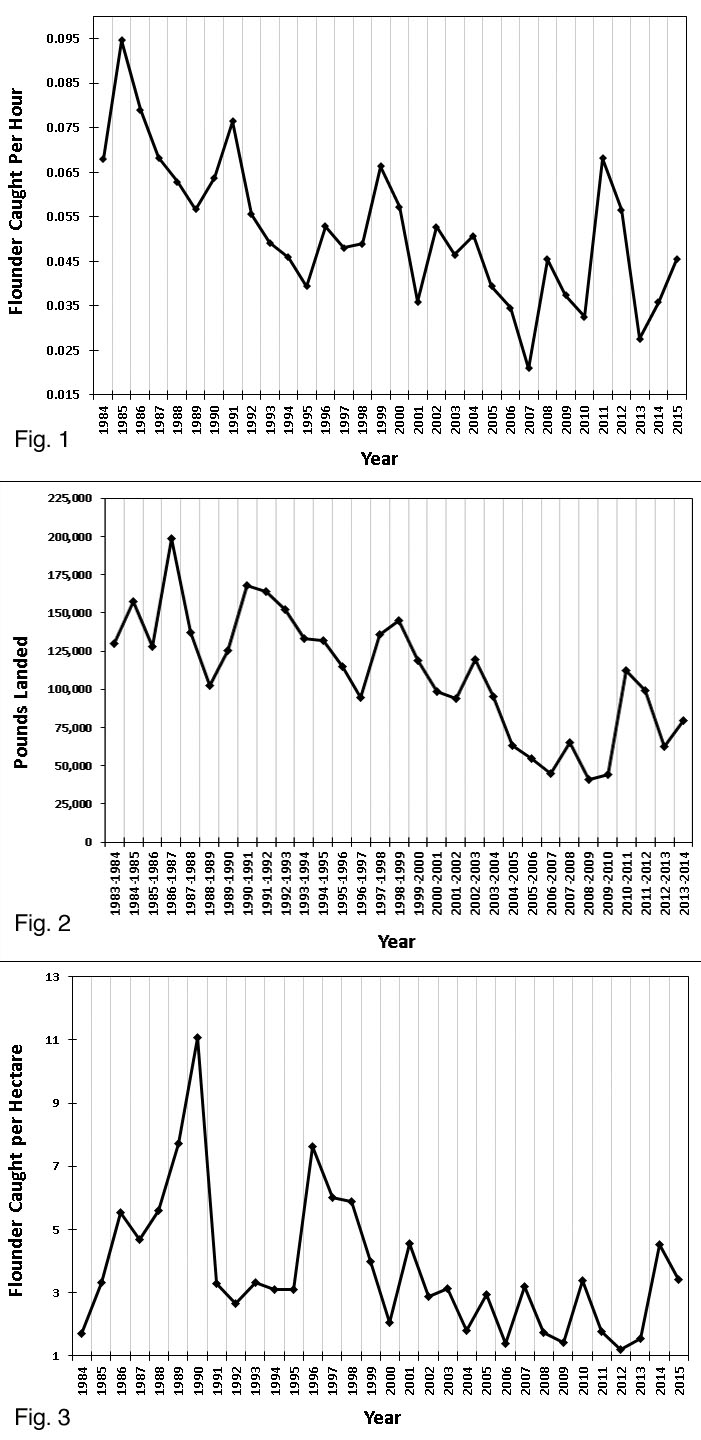Southern Flounder Biology and Management in Texas

Southern flounder are the third-most sought after fish species by anglers fishing Texas bays and estuaries. They are the largest of several flat fish species in the Gulf of Mexico and range from the coast of North Carolina to northern Mexico. These left-eyed flounder are a very sporting species to target with rod and reel, and make excellent table fare. Unfortunately, Texas flounder populations have "floundered" (sorry) over the last 30 years, for multiple reasons.
Southern flounder are a relatively short-lived species typically surviving only about 3-6 years in Texas. Females grow faster and larger and can live longer than males. They can reach lengths greater than 25 inches while males seldom grow larger than 14 inches. Sexual maturity occurs at 2-3 years of age (12-14 inches for females and 10-12 inches for males).
When cold fronts reach the Texas coast during the fall months, these mature flounder start migrating toward Gulf of Mexico passes for spawning. The month of November is when the majority of flounder migrate out the passes with males usually moving out first before the females. They are known to spawn in the Gulf but may also spawn in or near the passes as well. Spawning may occur multiple times during the fall and winter seasons with thousands of eggs released per event; approximately 50,000 eggs/pound of body weight are produced. Tides, currents, and wind carry juveniles through Gulf passes into the various Texas estuarine systems and habitats.
Before and during immigration into Texas estuaries, juvenile flounder undergo eye metamorphosis where their right eye migrates over to the left side of their body when they are about a quarter to half inch long. At the completion of metamorphosis, both eyes are permanently positioned on the left side of the body.
Soon after arriving in the estuary they settle into marsh and seagrass nursery habitats. As these juveniles grow they start migrating towards mud and sand flat areas. As they grow and begin to mature another interesting developmental characteristic is encountered, their gender is not determined until they are at least 1.5 inches in length, with water temperature being a strong factor in this development. When estuarine water temperatures are around 64 Fahrenheit, juvenile flounder have around a 50% chance of being either male or female. When temperatures are higher, flounder have a higher probability of becoming male.
To monitor the success of juvenile survival and the adult population, the Texas Parks and Wildlife Department (TPWD) developed an extensive monitoring program for collecting fishery-independent and fishery-dependent data. Independent data is collected through the use of seines and gill nets in all Texas bays and estuaries. Seines are used to capture small organisms along shorelines, while gill nets are used to catch larger species near shore. Dependent data is collected by surveying recreational anglers at public and private boat ramps on the Texas coast. This data is used to assess the health of populations and for implementing protective regulations when necessary.
From the first harvest regulation changes in the 1980s up until 2007 the adult population decline continued (Figure 1). However, after implementation of the November gigging ban in 2009 and favorable winter temperatures in 2010, gill net catch rates spiked in 2011 at over 3 times the 2007 catch rate, and remained high in 2012. And although catch rates fell off after 2012 they remained above the previous downward decline and currently are on an upward trend. Looking at the gill net catch rates (Figure 1) it is difficult to explain all of the peaks and valleys. However, it is probable that the gigging ban, at least, contributed to the trend change that began in 2011. These gill net catch rates were also reflected in the statewide recreational landings which exhibited a decreasing trend until 2011 and then reversing the trend (Figure 2). While it is often difficult to assign a cause to all population trends, these data would seem to indicate that a combination of favorable environmental conditions and implementation of conservative harvest regulations resulted in a suspension of the downward trend in both gill net and angler catch rates.
Another benefit of the conservative regulations and favorable weather conditions were increased juvenile numbers (Figure 3). The 2010, 2014, and 2015 seine catch rates are the 3 highest since 2001 and should be followed by higher gill net catch rates of adults. Indeed, the 2011 gill net catch rate was the highest since 1991, which followed the severe freezes of 1989-90.
Additionally, TPWD hatcheries have stocked over 260,000 juvenile flounder along the Texas coast since 2006. The stocking goal for 2016 is 25,000 one-half inch long fingerlings and there is strong probability that the hatchery program will far exceed that goal. Within the next few months, construction will begin on a flounder larvae culture building at Sea Center Texas in Lake Jackson. Partially funded by the Coastal Conservation Association (CCA) and various other generous donations, this new building will allow the TPWD hatchery program to culture flounder larvae nearly year round, substantially increasing production capabilities.
Southern flounder are an important species of flatfish on the Texas coast and have many distinctive life history traits. Harvest regulations have been adjusted over the last 3 decades to assist the population recovery, and the TPWD monitoring program has documented that fishery-independent catch rates and angler landings have increased in recent years. Additionally, CCA TPWD hatcheries are continually improving Southern flounder production for stocking into estuaries along the Texas coast. These are exciting times for Texas flounder anglers!
Special acknowledgment: Shane Bonnot


